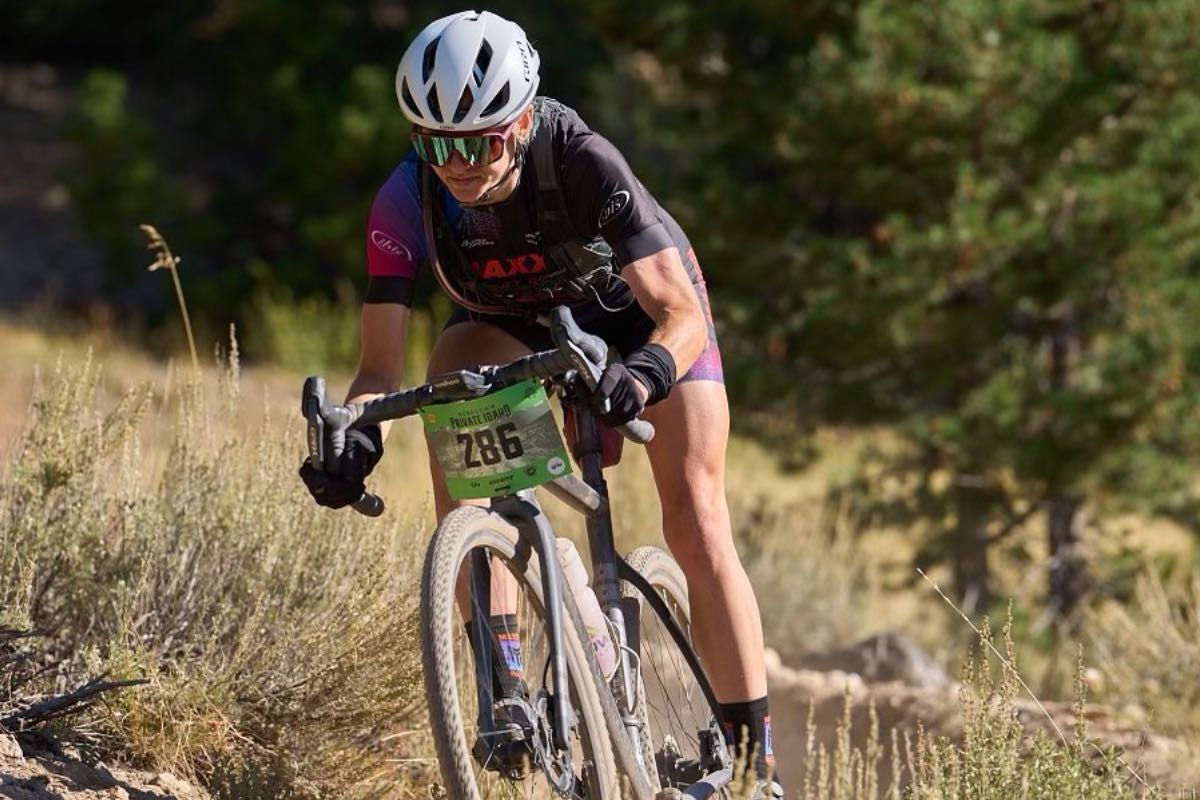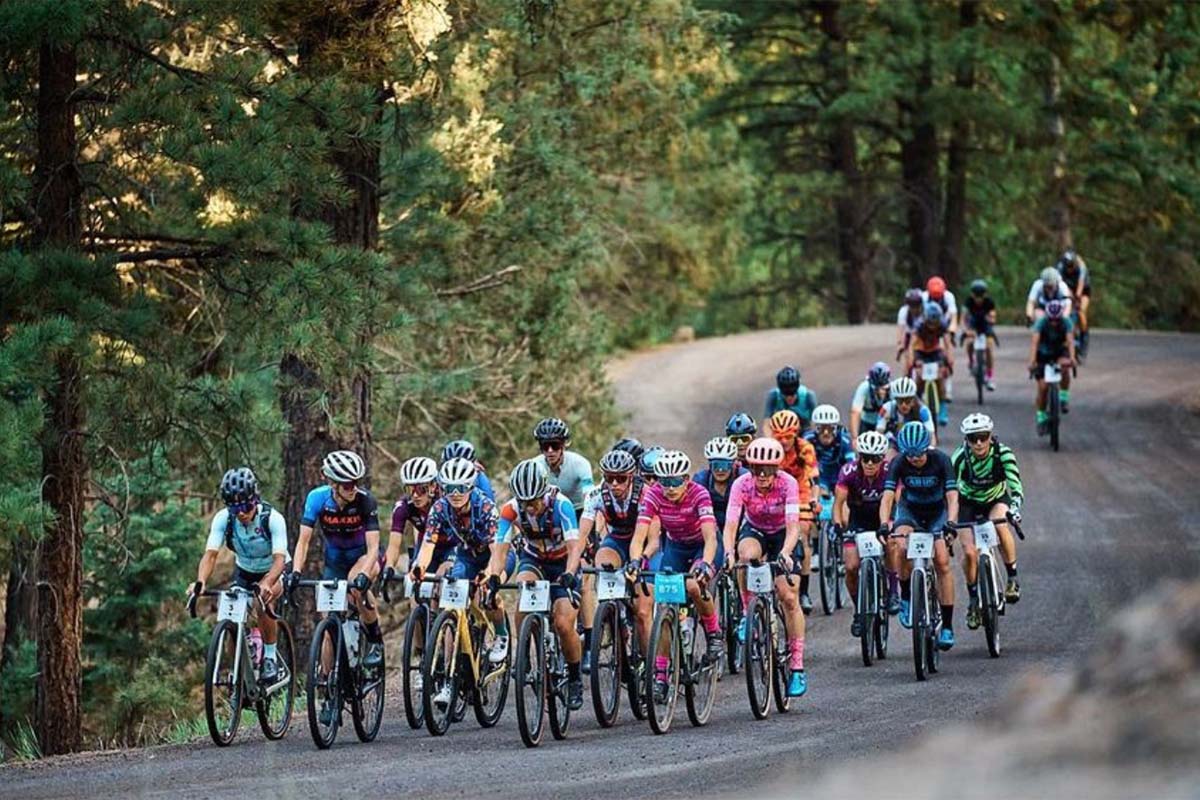Haley Smith: Going After Gravel
Posted by Andrew Davidson on October 22, 2022
Making up one-half of the powerful Maxxis Factory Racing team, Canadian Haley Smith is a highly accomplished professional off-road cyclist, a Tokyo 2020NE Olympian, Commonwealth Games and XCO World Cup medalist and current leader of the women’s Life Time Grand Prix standing; she has a finger directly on the pulse of all things off the beaten path. In addition to her on-bike accomplishments, Haley is a Kinesiology graduate, current Master’s of Sport Psychology student and anorexia survivor who combines her unique sport, life and educational experience to connect with people and organizations on a deep level. She’s a strong and vocal advocate for the improvement of mental health as it relates to sports and everyday life and can often be found doing speaking engagements in schools and corporate seminars. Coming off an impressive ride and overall win recently, at Rebecca’s Private Idaho gravel stage race, a “monument of gravel” as proclaimed by Velonews, she was kind enough to take some time to share her thoughts on the the increasingly popular world of gravel riding / racing, as well as some insight on how she makes use of her 4iiii power meter to prepare for such challenging events.
What’re your thoughts on the gravel riding / racing boom that’s been occurring? We’ve always had dirt and gravel roads and cyclo-cross or mountain bikes to ride them, why do you think it might just be taking off now?
Gravel is definitely becoming the most popular discipline for participation, and I think it comes down to accessibility. It is inviting, socially inclusive, doesn’t have as high of a skill barrier as mountain biking, isn’t as “intense” as road, and appeals to the first-timer and seasoned pro alike. Yes, we’ve always had cross bikes (though those aren’t as capable as these new gravel bikes with crazy tire clearance, etc, on the chunky off-road terrain in these races) and gravel roads, but we haven’t always had a defined way to partake in enjoying them. People love to have a challenge with defined boundaries and guidelines; it gives them something to work towards and a strong sense of achievement when the event is finished. But gravel is just not nearly as intimidating as the other disciplines. And thanks to the pioneers of gravel, the discipline has become one founded on fun, adventure, and community. And those are really enticing things for people looking to have a good time, and a compelling challenge, on bikes.
What would you say to someone who’s considering doing their first gravel event, whether it be a single day or stage race, any tips / advice?
I would say to pick an event that scares you just a little bit, but also makes you feel excited. That’s how you’ll know that you selected an appropriate level of challenge, which will give you a good chance of success and the motivation to come back for more! Lean into the atmosphere of the event and enjoy the community aspects of it; that’s one of the most fulfilling parts. Make sure you have practiced taking in some calories while exercising (that’s surprisingly difficult for a lot of people, if they haven’t had to do so before). And mostly, don’t put pressure on it. You’re out there to: challenge yourself, explore a new place, and (hopefully) make some friends. That’s truly all it’s about. So just have fun with it!
What would the “ideal” gravel event course look like to you, in terms of terrain, distance, elevation, weather, etc?
My ideal gravel course would be in the 4-5 hour range; have one ~30min climb coupled with lots of smaller, punchier ones; would definitely include some single track and/or technical trail; be forested; have some humidity in the atmosphere (I am NOT a desert gal); and have a sweet finish line party.
As a rider coming from a XCO mountain bike background, how do find the power demands of XCO and gravel differ?
I’m mostly doing the same type of steady state, threshold work and a similar volume as when I was training specifically for XCO. For gravel racing you need a solid base but you still have to have that high end, punchy effort to make the splits in the group. With women and men often racing together in a mixed field, there tends to be fractures along along the flat power sections of a course created by some of the stronger guys. If you can hold onto the group it makes a big difference, so having that high end is still necessary.
What kind of efforts / intervals are you using a power meter for while training to prepare for events like Rebecca’s Private Idaho?
I use a power meter whenever I train, but I don’t always look at power during the workout. When any interval is a maximal effort, I do not look at power. I analyze it after, to a degree, but I go purely by effort on these types of intervals. When an interval is sub-maximal, I still ride to a prescribed level of exertion, but I will check in with power and sometimes use that as a guide or encouragement to stay steady or dig into the effort a little more. Mostly, I just use power as a metric to look at after my rides are finished, to measure improvement, fatigue and efficiency.

Leading a Canyon train at the Canadian XCO Mountain Bike National Championships / photo: @canadiancyclist
What data metrics are you most interested in when doing a post-race / training analysis (Heart rate, Avg. Power, etc) and why?
In a post-race analysis, I’ll look at average vs. normalized power, HR , cadence, and time spent in different power zones. I think it’s important to know what the demands of the race actually were, and so looking at the average/ NP ratio tells you if it was more punchy or steady. You can have the same average power for two different races with incredibly unique demands and a much different spread of “time in zones”. Knowing how you produced your power tells you what you may need to work on to better prepare for next time. Also, these metrics can tell you your weaknesses. Was I carrying too much fatigue, and thus had to ride more steady? Or was I fresh and fit and able to make all the jumps needed?
If you’d like to know more about Haley and follow along on her cycling journey, check out her media and Strava profiles here:




